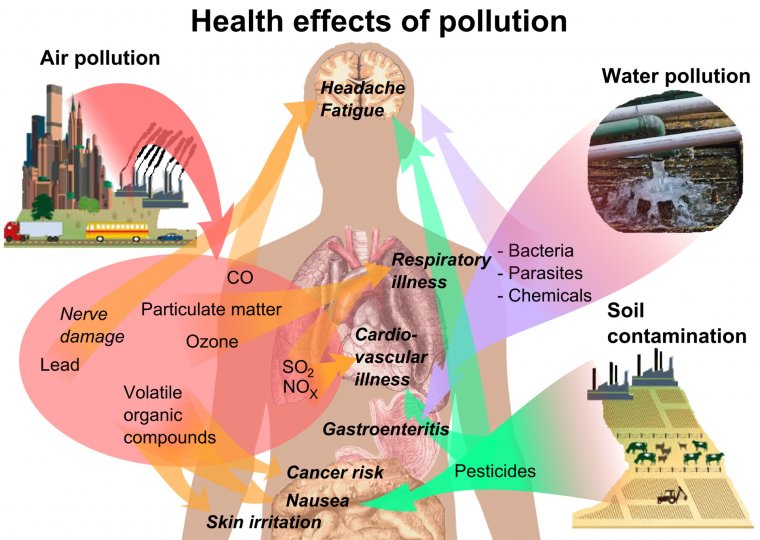| News / Science News |
Cleaner Air Tied to Healthier Lungs in Kids
NIH | MARCH 22, 2015
Researchers have linked a wide array of health effects to air pollution. Among these are reduced lung function, asthma, cardiovascular disease, preterm birth, and even death. The period between 11 and 15 years of age is particularly important for long-term lung function, as lungs are developing rapidly.

Overview of main health effects on humans from some common types of pollution. ![]()
A team of researchers examined data from 3 different groups of children from Southern California, taken during the time periods 1994–1998, 1997–2001, and 2007–2011.
They found improvements in lung function development were associated with declining levels of nitrogen dioxide; fine particles, which are 2.5 micrometers in diameter or less (found in smoke and haze); and larger particles with diameters up to 10 micrometers (including wind-blown dust).
The proportion of children with clinically low lung function at 15 years of age also declined as air quality improved. Across the 3 time periods, the proportion with low lung function fell from 7.9% to 6.3% to 3.6%. These associations held after adjustment for several other variables, including smoking habits, exposure to cats, dogs, mold, and mildew.
The results show that broad-based efforts to improve general air quality can significantly improve lung function in children. Improvements were seen in both boys and girls, in children with and without asthma.
YOU MAY ALSO LIKE




